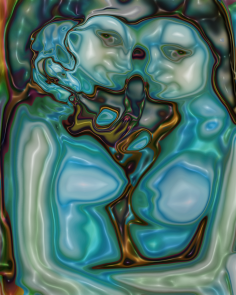DOUGLAS D. PRINCE
ダグラスD.プリンス

source: triangulationblog
“My creative evolution in photography is driven by my observations, my response to the environment, seeing things, and a need to manifest this vision into a tangible form. Another motivation is my curiosity about image processes and how these processes affect my perceptions.
I’ve been working to build a personal vision where craft and content fuse, teaching me to see the world photographically. Photography is the tool I use to search my environment. For me, the medium is as important as the content in making an image and it is an integral part of the image making process. I have explored traditional and alternative processes with the same passion that I‘ve explored my environment. Whether I’m working with the camera, in the darkroom, or on the computer, I’m looking for juxtapositions, relationships and transformations that create new perceptions, fostering an insight into the elementary nature of things. I strive to make images where the ordinary is elevated to the extraordinary. I’m looking for things that I haven’t seen before.”
.
.
.
.
.
.
.
source: thefilearts
In a career spanning almost 50 years Douglas D. Prince manages to stay immensely curious about new technology and manages to keep making fresh and relevant images in todays world. In working with the camera, in the darkroom, or on the computer he is exploring how the process of photography can help create meaningful and resonating images. At the same time photography is about exploring the world, interpreting or interacting with what you see. This increasingly takes the form of using internet as a camera, using pre-existing images as a basis for his work. Douglas Prince uses the vast possibilities of the technology and the unlimited availability of images as an excuse to be completely free; his images span a large range of styles and subjects and techniques and have in common only that they are poignant and significant.
Douglas Prince’s work is part of several notable permanent collections, among which the Museum of Modern Art, New York, The Smithsonian Institution, Washington, The Art Institute of Chicago and the International Museum of Photography, Rochester, New York. Douglas has been teaching photography at universities around the USA since the 1970s. He currently teaches at the New Hampshire Institute of Art in Manchester, NH.
.
.
.
.
.
.
.
source: candb
Douglas is al meer dan 50 jaar gepassioneerd actief met creatieve fotografie en het lesgeven. Zijn werk is in vele individuele- en groepstentoonstellingen te zien geweest, en is onderdeel van meerdere museum- en privécollecties zoals dat van The Museum of Modern Art, the Los Angeles County Museum of Art, the Addison Gallery of American Art, the Currier Museum of Art and the National Gallery, Canberra, Australia.
Douglas begon zijn carriëre als traditioneel fotograaf met “medium-sized filmcamera’s”. Al snel begon hij alternatieve manieren van kijken en creëren te ontwikkelen door beelden te combineren in de donkere kamer, en door het maken van fotosculpturen met film. In de late jaren negentig leide zijn foto-experimenten hem tot het digitale beeld. Dat bood hem enorme nieuwe en brede mogelijkheden om het collage-medium te ontwikkelen.
Zijn bronnen variëren van digitale camerabeelden, scans uit boeken en films, internetbeelden en objecten die hij zelf direct onder een scanner legt. Het zoeken naar beelden op het web is voor Douglas vergelijkbaar met het ontdekken van een omgeving met een camera. Hij ziet zijn computerscherm als het vizier op een camera. Of hij nu werkt met een camera, in de donkere kamer of op de computer, Douglas zoekt altijd naar tegenstellingen en verbanden die een nieuwe manier van kijken bewerkstelligen, zodat onze blik op de wereld veranderd.

